-
November 12 and December 5, 2015 Sabatini Building, Auditorium
The 1920s
Presentation of the film series by Bruce Posner (video conference)
Charles Sheeler and Paul Strand. Manhatta. 11’41’’. 1920-21. 1ª version with the Donald Sosin orchestra
Fernand Léger and Dudley Murphy. Ballet mecánico. 15’53’’. 1923-24
Rrose Sélavy a.k.a. Marcel Duchamp. Anémic Cinéma. 6’40’’. 1924-25
Robert Florey and Slavko Vorkapich. The Life and Death of 9413-A Hollywood Extra. 13’20’’. 1927
Robert Florey. Skyscraper Symphony. 8’53’’. 1929
Duración: 55 minutes
Early avant-garde cinema was torn between fetishistic enthusiasm and scepticism towards the industrial and technological progress in the aftermath of World War One. This cinema finds one of its central objects in the modern city, conceived as an organism of precise operation – resulting in the birth of the urban symphony. Manhattan juts out as the prototype of this utopian metropolis, for instance in Manhatta and Skyscraper Symphony. The combination of fascination and perplexity is also unveiled in the arrival of European avant-garde aesthetics: the sense of mechanistic comicality in Ballet mécanique, the tragic parody of the urban landscape and the anti-hero in The Life and Death of 9413, or, more conceptually, the inquiries into language and the vision set out by Marcel Duchamp in Anémic Cinéma.
-
November 13 and December 6, 2015 Sabatini Building, Auditorium
The 1930s
Ralph Steiner. Mechanical Principles. 10’18’’. 1930
Jay Leyda. A Bronx Morning. 14’05’’. 1931
J.S. Watson, Jr., Melville Webber, Alec Wilder, Remsen Wood and Bernard O’Brien. Lot in Sodom. 25’53’’. 1930-32
Emlen Etting. Poem 8. 19’40’’. 1932-33
Oskar Fischinger. An Optical Poem. 7’02’’. 1937
Joseph Cornell. Thimble Theatre. 6’07’’.1938-1968
Duration: 83 minutes
A greater expansion of avant-garde ideas defined the experimental cinema of the thirties as it refined and expanded what had been passed on from the previous decade. The legacy of the urban symphony took on a more poetic and intimate side in films like A Bronx Morning. The predominance of rhythms and song from the machine age were once again present in Ralph Steiner’s Mechanical Principles, whereas films like Poem 8 and Lot in Sodom augmented choreographies of sensual or openly sexual bodies. With the aim of giving shape to mental images, Oskar Fischinger explored the expressive capacities of the medium through exclusively abstract references, while an interest in decontextualising quintessential collage images led Joseph Cornell to deploy a combination of found footage cinema and surrealist strategies alloyed with alien materials, between a fascination in performance and child-like nostalgia.
-
November 19 and December 9, 2015 Sabatini Building, Auditorium
The 1940s
Mary Ellen Bute and Ted Nemeth. Tarantella. 4’24‘’. 1940
Rudy Burckhardt. The Pursuit of Happiness. 8’09’’. 1940
Francis Lee. 1941. 4’. 1941
Maya Deren and Alexander Hackenschmied. Meshes of the Afternoon. 13’46’’. 1943
Maya Deren. Meditation on Violence. 12’27’’. 1948
Helen Levitt, Janice Loeb and James Agee. In the Street. 16’50’’. 1945-1952
Duration: 59 minutes
Over the course of the 1940s, some films fell back into the autonomy of the image and into worlds created inside it. Musical orchestration and abstract forms built the cornerstone of Tarantella, while Meshes of the Afternoon demonstrates the endurance of automatism in film. The Pursuit of Happiness sees the metropolis reflected as a space of chance encounters and the search for meaning in each apparently free individual through consumption and the alienation that confined urban symphonies in the preceding years. The USA’s emergence in the Second World War shrouded a large part of avant-garde cinema productions, loading them with violence: 1941 recreates the Japanese attack on Pearl Harbor, for instance. The directors of In the Street unequivocally place the New York neighbourhood Harlem between the battlefield and the theatre, imbuing it with the aesthetics of street photography. More explicit violence is displayed in the camera-director-performance choreography that unfurls in Meditation on Violence.
-
November 20 and December 11, 2015 Sabatini Building, Auditorium
The 1950s
James Broughton. Four in the Afternoon. 14’. 1950-51
Mary Ellen Bute and Ted Nemeth. Abstronic. 5’45’’. 1952
Kenneth Anger. Eaux d’Artifice. 12’57’’. 1953
Ian Hugo. Bells of Atlantis. 9’27’’. 1952-53
Jim Davis. Evolution. 8’01’’. 1954
Hy Hirsh. Gyromorphosis . 6’40’’. 1954
Marie Menken. Hurry, Hurry. 4’27’’. 1957
Francis Thompson. N.Y., N.Y. 15’10’’. 1949-1958
Duration: 75 minutes
The fifties ebbed and flowed between two poles: on one extreme, the persistence and enrichment of abstract experiments that spanned Abstronic, Evolution, Gyromorphosis and N.Y, N.Y., and on the other, the playfulness and ritual of erotic desire present in Four in the Afternoon and Eaux d'Artifice, where water takes on an abstract and oneiric role. In Bells of Atlantis the mythopoeic references, akin to an exercise in automatic confessional writing, operate as an exploration into subconscious and intrauterine recollections. The interplay between organicism and abstraction reappear, once again with an undercurrent of desire in Hurry, Hurry! as microscopic images of sperms are juxtaposed with others from men anxiously seeking a sexual partner.
-
November 26 and December 17, 2015 Sabatini Building, Auditorium
The 1960s
Hilary Harris. 9 Variations on a Dance Theme. 12’39’’.1966-67
Bruce Baillie. Castro Street (The Coming of Consciousness). 9’59’’. 1966
Owen Land [George Landow]. Film That Rises to the Surface of Clarified Butter. 8’26’’. 1968
Jonas Mekas. Walden: Diaries, Notes and Sketches. [Extracto] 13’05’’. 1969
Lawrence Jordan. Our Lady of the Sphere. 9’14’’. 1969
PeUnnamed Film
Duration: 53 minutes
The sixties shared a common reduced narration and an awareness that turned towards actions giving rise to explorations into elements from the film medium. 9 Variations on a Dance Theme underscores the camera movements that set a specific artistic language in motion, in this case dance. Film That Rises to the Surface of Clarified Butter reiterates the animator’s gesture to return to the metaphor surrounding the misleading relationship between the two-dimensional reality of film and the real world. The multiple superimpositions in Castro Street (The Coming of Consciousness) and the continual tracking shot reveal a walker in a paralysed industrial landscape. The fragment from Walden: Diaries, Notes and Sketches focuses on simple and immediate experiences from the snapshots of Jonas Mekas’s lived moments. The recovery of an aesthetic of surrealist appropriation turns Our Lady of the Sphere into a deliberately illegible tale between sci-fi, the world of children’s fantasy and dreams. The session concludes with an unexpected and surprising film alluding to how experimental film has previously been exhibited.
-
November 27 and December 18, 2015 Sabatini Building, Auditorium
The 1970s
Tom Palazzolo. Love it / Leave it. 14’07’’. 1970
Lawrence Janiak. DL2 (Disintegration Line #2). 11’46’’. 1970
Amy Greenfield. Transport. 5’43’’. 1970
Bruce Posner. Sappho and Jerry, Pts. 1-3. 5’35’’. 1977-78
Francis Lee. Ch’an. 6’08’’. 1983
Phil Solomon and Stan Brakhage. Seasons... 16’00’’. 2002
Charles Sheeler and Paul Strand. Manhatta. 11’41’’. 1920-21, 2ª version with soundtrack by Wolfe and Carluzzo
Duration: 70 minutes
The development of video and its popularisation in the seventies pushed experimental film to look at its own nature. Similarly, the new socio-political climate in the USA in the era of protests surfaced in films such as Love it / Leave it, an essay on patriotism and consumption. The focus shifts towards the film medium located at the heart of DL2 (Disintegration Line #2), based on abstract animations, while Transport returns to the idea of human choreography. In Sappho and Jerry, Bruce Posner reverts to the strategy of alteration in found footage, contrasting his own film-making practice with his work restoring the landmark Manhatta. The session ends with three films from outside the chronological timeframe that enter into dialogue between the past and present in experimental cinema: Francis Lee’s Cha'an, in which a film treatment intensifies the aquatic quality of ink paintings by the film-maker and implies the reappearance of cinema-poetry; Phil Solomon’s film Seasons…, which recovers and reactivates the film painted and torn by Stan Brackhage; and the aforementioned Manhatta.
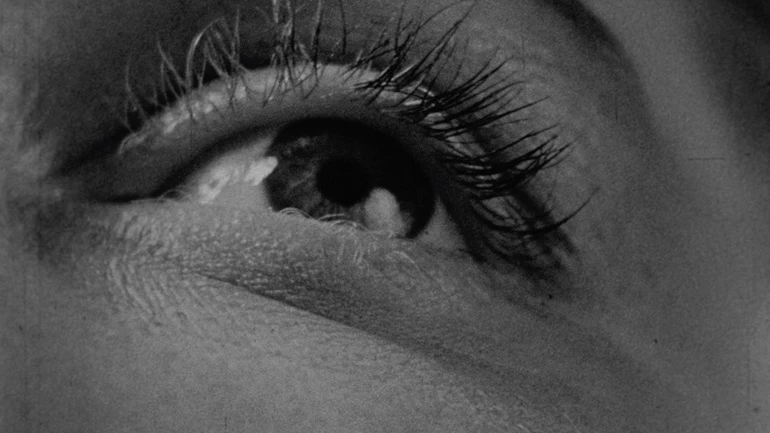
Held on 12, 13, 19, 20, 26, 27 Nov, 05, 06, 09, 11, 17, 18 Dec 2015
Avid Eyes is an anthology of experimental American cinema curated by researcher Bruce Posner, who also oversaw the landmark film series Unseen Cinema, held in the Museo Reina Sofía in 2006. Avid Eyes features a selection of 37 recently remastered films that introduce the multiple pathways traced by American avant-garde cinema between 1920 and 1970.
According to Walter Benjamin, the viewer accesses their “optical unconscious” through the functions of the eye and the camera’s ability to capture and pinpoint something transparent, invisible or elusive in everyday life. For Benjamin, this is the basic experience of cinema, based on the fascination it produces, and one of the driving forces behind avant-garde cinema across the 20th century. At the core of experimental film a search for responses to these agitations of the eye are discerned, a desire to transcend reality – this eye, conceived as the visual organ belonging to a hungry and non-conformist viewer, determines the films that make up this series.
The selection centres on the productions of different generations of film-makers working out of the United States, where the early reception of the avant-garde and its transformation into outsider film converges with classical cinema, albeit whilst moving in the opposite direction. The 1920s mark the start of the programme, and the 1960s its end point and the advent of video practices and the subsequent reframing of specific roles in the medium of film. The productions in this series express concepts, feelings, moods and productions of intellect in absolute visual terms, and all have diverse principles in common: a recurrence to poetry as a model, the use of visual tools, the rejection of a narrative thread, the challenge to temporal logic and, above all, the mode of production and personal distribution.
Just as poetry feeds prose without disappearing altogether, these films reflect the resistance of a series of film-makers who were aware they were clutching an instrument of thought. In hindsight, Maya Deren would write: “I thought about how interesting it would be to use film differently. Until then, it had been used as if it were a novel telling a story, or as a documentary. Between those two poles there was nothing, and I wanted to use film as a poetic medium […]”. Thus, the murmurings from César Vallejo’s poetry becomes apparent, and runs through the whole series: “Avid eyes, but from poetry!”.
Itinerary
CGAI-Filmoteca de Galicia (February 4 - February 25, 2016).
TABAKALERA (San Sebastian) (January 15 - February 19, 2016)
Curatorship
Bruce Posner
Itinerancies
CGAI-Filmoteca de Galicia
4 February, 2016 - 25 February, 2016
TABAKALERA
15 January, 2016 - 19 February, 2016
Más actividades

Difficulty. Forms and Political Effects of Deviation in Writing and Contemporary Art
23 February – 14 December 2026 – Check programme
Difficulty. Forms and Political Effects of Deviation in Writing and Contemporary Art is a study group aligned towards thinking about how certain contemporary artistic and cultural practices resist the referentiality that dominates the logics of production and the consumption of present-day art. At the centre of this proposal are the concepts of difficulty and deviation, under which it brings together any procedure capable of preventing artistic forms from being absorbed by a meaning that appears previous to and independent from its expression. By ensuring the perceptibility of their languages, difficulty invites us to think of meaning as the effect of a signifying tension; that is, as a productive and creative activity which, from the materiality of art objects, frees aesthetic experience from the representational mandate and those who participate in it from the passiveness associated with tasks of mimesis and decoding.
The economy of the referential norm translates the social logic of capitalism, where insidious forms of capturing subjectivity and meaning operate. In the early 1980s, and adopting a Marxist framework, poet Ron Silliman highlighted how this logic entailed separating language from any mark, gesture, script, form or syntax that might link it to the conditions of its production, rendering it fetichised (as if without a subject) and alienating its users in a use for which they are not responsible. This double dispossession encodes the political strategy of referential objectivity: with no subject and no trace of its own consistency, language is merely an object, that reality in which it disappears.
The political uses of referentiality, more sophisticated today than ever before, sustain the neoliberal-extractivist phase of capitalism that crosses through present-day societies politically, economically and aesthetically. Against them, fugitive artistic practices emerge which, drawing from Black and Queer studies and other subaltern critical positions, reject the objective limits of what exists, invent forms to name what lies outside what has already been named, and return to subjects the capacity to participate in processes of emission and interpretation.
Read from the standpoint of artistic work, the objective capture of referentiality may be called transparency. Viewed from a social contract that reproduces inequality in fixed identity positions, transparent in this objectivity are, precisely, the discourses that maintain the status quo of domination. Opposite the inferno of these discourses, this group aims to collectively explore, through deviant or fugitive works, the paradise of language that Monique Wittig encountered in the estranged practices of literature. For the political potency of difficulty — that is, its contribution to the utopia of a free language among equals — depends on making visible, first, its own deviations; from there, the norm that those deviations transgress; and finally, the narrowness of a norm which in no way exhausts the possibilities ofsaying, signifying, referring and producing a world.
From this denouncement of referential alienation, fetishisation and capture, Difficulty. Forms and Political Effects of Deviation in Writing and Contemporary Art turns its attention to the strategies of resistance deployed by contemporary artists and poets. Its interest is directed towards proposals as evidently difficult or evasive as those of Gertrude Stein, Lyn Hejinian, Theresa Hak Kyung Cha, Kameelah Janan Rasheed, Kathy Acker, María Salgado and Ricardo Carreira, and as seemingly simple as those of Fernanda Laguna, Felix Gonzalez Torres and Cecilia Vicuña, among other examples that can be added according to the desires and dynamics of the group.
The ten study group sessions, held between February and December, combine theoretical seminars, work with artworks from the Museo Reina Sofía’s Collections and exhibitions, reading workshops and public programs. All these formats serve as spaces of encounter to think commonly about certain problems of poetics — that is, certain political questions — of contemporary writing and art.
Difficulty. Forms and Political Effects of Deviation in Writing and Contemporary Art inaugurates the research line Goodbye, Representation, through which the Museo Reina Sofía’s Studies Directorship seeks to explore the emergence of contemporary artistic and cultural practices which move away from representation as a dominant aesthetic-political strategy and redirect their attention toward artistic languages that question the tendency to point, name and fix, advocating instead for fugitive aesthetics. Over its three-year duration, this research line materializes in study groups, seminars, screenings and other forms of public programming.

CLINIC 2628. A Community of Writing and Research in the Arts
February – October 2026
Clinic 2628 is a project which supports and brings together writings which stem from the intention to offer a space and sustainable time for research work in art and culture. Framed within an academic context which is increasingly less receptive to the forms in which thinking happens and is expressed, the aim is to rescue the academic from its neoliberal trappings and thus recover the alliance between precision and intuition, work and desire. A further goal is to return writing to a commons which makes this possible through the monitoring of processes and the collectivisation of ideas, stances, references and strategies.
The endeavour, rooted in a collaboration between the Museo Reina Sofía’s Studies Directorship and the Artea research group, via the i+D Experimenta project, is shaped by three annual editions conceived as spaces of experimentation, discussion and a demonstration of writings critical of what is put forward by today’s academia.
What forces, forms and processes are at play when writing about art and aesthetics? In academia, in museums and in other cultural institutions, the practice of writing is traversed by productivist logics which jeopardise rhythms of research and experimentation. The imposition of both scientism inherent in the structure of “the paper” and the quantifying of results which demand a criterion of quality and visibility sterilise and smoothen, from the outset, the coarseness that is particular to writing understood from the concrete part of language: phonic, graphic, syntactic and grammatical resistance connecting the language user to the community the language unites and activates. They also sterilise the roughness enmeshed in the same desire to write, the intuitive, clear and confusing pathways that once again connect the writer to those reading and writing, participating in a common good that is at once discovered and produced.
The progressive commercialisation of knowledge propelled by cognitive capitalism moves further away from the research and production of knowledge in artworks and artistic languages and practices. The work of curators and archive, criticism, performances and essays formerly saw a horizon of formal and emotional possibilities, of imagination that was much broader when not developed in circumstances of competition, indexing and impact. Today, would it be possible to regain, critically not nostalgically, these ways; namely, recovering by forms, and by written forms, the proximity between art thinking and its objects? How to write in another way, to another rhythm, with no more demands than those with which an artwork moves towards different ways of seeing, reading and being in the world?
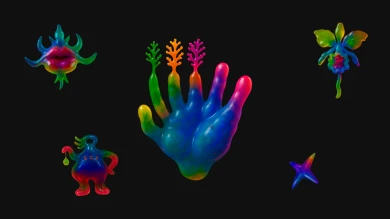
Cultural Work
Thursday, 12 February 2026 – 5:30pm
This series is organised by equipoMotor, a group of teenagers, young people and older people who have participated in the Museo Reina Sofía’s previous community education projects, and is structured around four themed blocks that pivot on the monstrous.
Session number two looks to approach film as a place from which cultural work is made visible and processes of production engage in dialogue with artistic creation. From this premise, the session focuses on exploring how audiovisual content is produced, assembled and distributed, from the hands that handle the images to the bodies that participate in its circulation. The aim is to reflect on the invisible effort, precarity and forms of collaboration that uphold cultural life, that transform the filmic experience into an act that recognises and cares for common work.
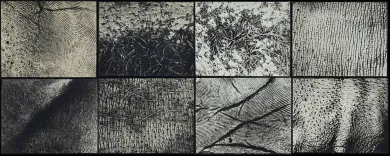
The (legal) person and the legal form. Chapter II
8, 12, 15 January, 2026 – 16:00 to 19:00
As part of the Studies Constellation, the Study Directoship’s annual fellowship, art historian and theorist Sven Lütticken leads the seminar The (Legal) Person and the Legal Form: Theoretical, Artistic, and Activist Commitments to foster dialogue and deepen the hypotheses and questions driving his research project.
This project, titled Unacting Personhood, Deforming Legal Abstraction, explores the dominance of real abstractions—such as exchange value and legal form—over our processes of subjectivation, and asks how artistic practices can open up alternative ways of representing or performing the subject and their legal condition in the contemporary world.
The seminar consists of eight sessions, divided into three chapters throughout the academic year. While conceived as non-public spaces for discussion and collective work, these sessions complement, nourish, and amplify the public program of the Studies Constellation.
In this second chapter of the seminar, the inquiry into the aesthetics and politics of legal form continues with three sessions that pick up the discussions held in Chapter I but propose new lines of flight. The first session focuses on international law via the writings of the British author China Miéville, which allows us to reconsider the notion of the legal form –following Evgeny Pashukanis— and, through it, a variety of (people’s) tribunals. While the crucial concept of the legal person –as the right-holder central to the form of law— was debated in Chapter I, the second session focuses on attempts to extend personhood not (just) to corporations, but rather to nonhuman animals or ecosystems. Finally, the third session poses the question: how can groups and networks use officially recognized organizational forms (such as the foundation or the cooperative) and/or use a collective persona (without necessarily a legal “infrastructure” to match) to act and represent themselves?

TEJA 2026. Open Call for Emergency Art Residencies
Proposal submission until 12 January, 2026
TEJA / Red de espacios culturales en apoyo a situaciones de emergencia [Network of Cultural Spaces in Support of Emergency Situations] has the mission to promote transnational cooperation by offering temporary art residencies to artists and cultural practitioners who find themselves in complex socio-political situations in their countries of origin. During their stay in Spain, residents receive accommodation, legal and psychological counseling, and access to a network of organizations and professionals with whom they can share, develop, and continue with their creative projects. The goal is to provide a safe and stimulating environment where artists can continue their work despite adverse circumstances and generate dialogue spaces that ensure freedom of expression through joint activities both in Spain and with international collaborators.
During 2026, TEJA hosts three new residencies, each lasting three months, dedicated to supporting artists and cultural practitioners residing in the West Bank and Jerusalem. In addition, in the second half of the year, TEJA hosts three additional residencies for Gazan artists, which are offered by invitation (as Spain is currently unable to facilitate evacuations from Gaza, these invitations are coordinated through France). These residencies aim to provide a stable, creative environment and foster artistic exchange in the face of ongoing adversities. Through this new program, TEJA reaffirms its commitment to amplifying Palestinian voices and empowering artists as they navigate these turbulent times.
The selection is carried out by the TEJA network in close collaboration with each hosting partner. This year the hosting partners are: La Escocesa (Barcelona), hablarenarte / Planta Alta (Madrid), Espositivo (Madrid), Institute for Postnatural Studies (Madrid), Casa Árabe (Córdoba). The selection prioritizes the artist’s personal and professional situation first, and then the alignment with the practices and themes of the hosting spaces. Proposal submission deadline is January 12th, 2026, 23:59 h.
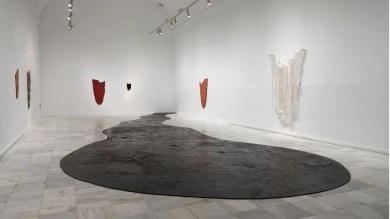
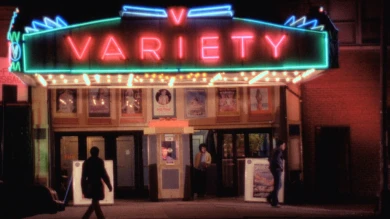
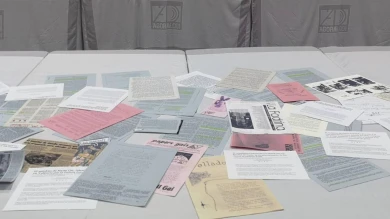
![Miguel Brieva, ilustración de la novela infantil Manuela y los Cakirukos (Reservoir Books, 2022) [izquierda] y Cibeles no conduzcas, 2023 [derecha]. Cortesía del artista](https://recursos.museoreinasofia.es/styles/small_landscape/public/Actividades/ecologias_del_deseo_utopico.jpg.webp)
![Ángel Alonso, Charbon [Carbón], 1964. Museo Reina Sofía](https://recursos.museoreinasofia.es/styles/small_landscape/public/Actividades/perspectivas_ecoambientales.jpg.webp)